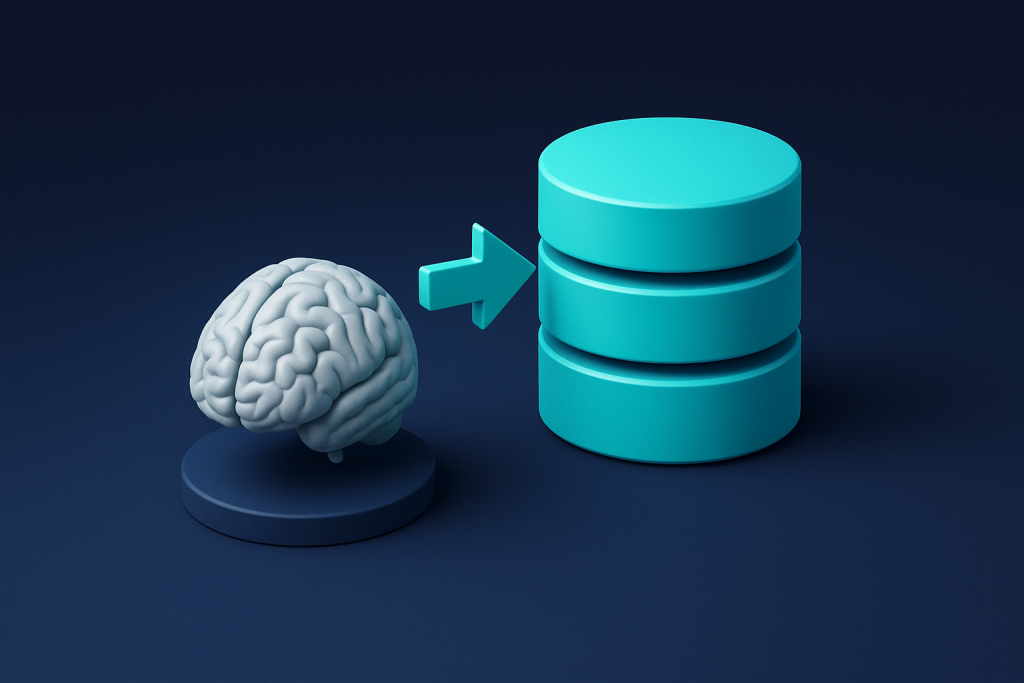
AI is everywhere in 2025. From customer service bots to predictive healthcare tools, it’s the poster child for innovation. But amid the excitement, a critical truth often gets missed:
AI is only as powerful as the data it learns from.
The true differentiator isn’t the model or algorithm. It’s the quality, structure, and strategy behind your data. In app development and beyond, data is no longer just a backend byproduct. It’s the foundation of long-term value.
This article unpacks why data—not AI—is your real competitive asset, and what it means to build digital products that prioritise it.
Garbage In, Garbage Out: Why Data Quality Matters
The phrase “garbage in, garbage out” has never been more relevant. AI models are pattern recognisers. If the data they’re trained on is:
-
Incomplete
-
Inconsistent
-
Biased
-
Unstructured
…then the insights they produce will be flawed at best and damaging at worst.
Think of an app using AI to recommend products. If your training data excludes certain customer groups or reflects outdated preferences, your recommendations will skew, alienate, or fail to convert. The issue isn’t the model, it’s the data feeding it.
Data Isn’t Just Input, It’s Output Too
It’s easy to frame data as something we collect for future use. But the smartest apps also produce data as a meaningful output. They surface:
-
Patterns in user behaviour
-
Emotional sentiment over time
-
Feature performance trends
-
Predictive signals for churn or upsell
This kind of output turns data into a strategic layer. Not just logs or reports, but actionable knowledge that informs marketing, product, operations, and beyond.
In short: a good app collects data. A great one generates value from it.
Most AI Failures Are Data Failures
It’s not model complexity that sinks most AI projects—it’s data readiness. According to industry reports:
Up to 80% of the time spent on AI initiatives goes into data wrangling and cleaning, not modelling.
And still, 70–80% of those projects fail to meet their goals. Why?
-
Teams underestimate how siloed or fragmented their data is
-
Data lacks clear ownership or documentation
-
There’s no shared definition of what “quality” looks like
Bad data derails AI before it starts. Worse, it creates false confidence leading to flawed strategies based on broken insights.
What AI-Ready Data Actually Looks Like
To build AI-powered systems that deliver real results, your data needs to be:
-
Structured: Consistent schemas and formats
-
Labelled: Context-rich metadata and training sets
-
Unified: No duplication or fragmentation across tools
-
Governed: Clear ownership, quality controls, compliance
-
Multi-modal: Incorporating text, audio, images where useful
Good models amplify good data. But great systems are designed to continuously refine their data—cleaning, learning, and improving as they go.

Shift From AI Hype to Data Strategy
Rather than asking “What AI features should we add?” the better question is:
“What data does our app collect, and how do we elevate it?”
A strong data strategy includes:
-
Auditing: what data you currently have (and what’s missing)
-
Aligning: teams around shared definitions and KPIs
-
Breaking silos: between product, marketing, and tech
-
Designing: features that encourage high-quality data input
-
Building: tools to turn raw logs into interpretable insights
Your App Is a System, Not a Set of Features
The best-performing apps today aren’t just tools they’re systems that learn, evolve, and improve over time.
They:
-
Ingest structured data continuously
-
Use AI to detect and interpret patterns
-
Feed those patterns back into product design
-
Create outputs that drive smarter business decisions
This is the flywheel effect. Every user interaction isn’t just an input—it’s a potential learning event. When apps are designed this way, data doesn’t just support the product. It becomes the product.
Case Studies
The real-world value of a data-first approach becomes tangible when we look at apps intentionally designed to treat data as a strategic asset—not just fuel for a novelty feature. Below are two DreamWalk-developed products where AI is embedded thoughtfully, guided by robust data pipelines that grow stronger with every use.
Recycle Mate
Built in collaboration with ACOR and Adaptation, Recycle Mate uses AI-powered image recognition to help users identify which bin to use for household items. But the real innovation lies in the custom machine learning model, trained on user-supplied images and continuously refined through real-world interactions. The AI doesn’t just classify waste—it learns from every scan, guided by a growing dataset shaped by user contributions.
Drone-Hand
Drone-Hand is an AI-enabled livestock and property monitoring app for farmers. It autonomously flies drones across vast properties, identifying stock counts, infrastructure changes, and animal wellbeing. But it’s not the drone that’s smart—it’s the adaptive system behind it. Trained on rich, locally relevant datasets and refined through ongoing use, the model evolves with each scan, delivering more accurate insights over time.
In both cases, AI wasn’t the end goal. Guided by expert strategy, these apps were designed to become intelligent data engines—where value compounds over time, and AI serves the system, not the other way around.
Meta
Meta’s recent investment in Scale AI underscores a strategic shift from chasing flashy models to owning the data label refinery. By securing a significant stake in Scale, Meta is doubling down on high-fidelity human-labeled data as its core fuel for AI, not just the engine. This move signals a tectonic shift in how tech giants compete in the AI race.
Commonwealth Bank of Australia
The Commonwealth Bank is rewriting banking through speed and scale. By migrating to AWS, deploying 2,000+ AI models, and analysing 157?billion customer data points, it’s now making around 55 million personalized decisions every day—all driven by a robust, high-integrity data infrastructure.
Conclusion: Fix the Foundation, Then Scale the System
AI gets the hype, but data gets the results. If your goal is long-term value (for users, for stakeholders, for growth) the smartest investment you can make isn’t in another model. It’s in treating your app’s data pipeline like a first-class feature.
To recap:
-
Prioritise data quality, not AI novelty
-
Treat insights as products, not reports
-
Build apps as systems that learn, not just tools that react
-
Let the AI follow the data (not the other way around)
Want to build apps that get smarter (and more valuable) every time they’re used? Start with the data.
DreamWalk is an award-winning Australian app development company. We pride ourselves on our ethical and transparent app development process and operate by our unique Ethical App Development Charter. To learn more about us and the work we do, head to www.dreamwalk.com.au.

About the Author
Daniel Rogriguez is an award-winning app designer and Managing Director of DreamWalk. Daniel has helped hundreds of businesses and startups plan, design, develop and launch successful apps.
Got an app idea?
What to read next
Try one of these insightful DreamWalk articles






